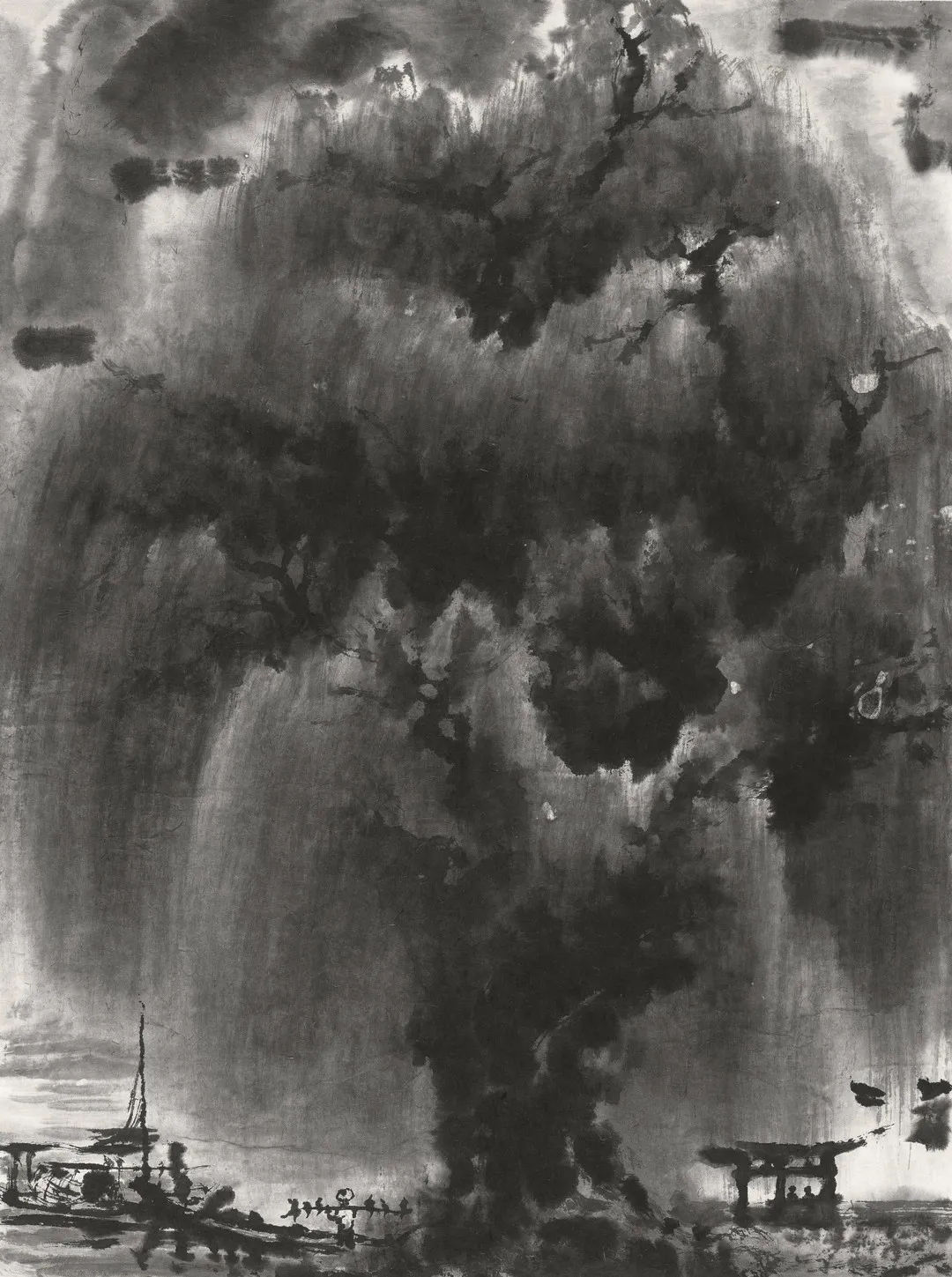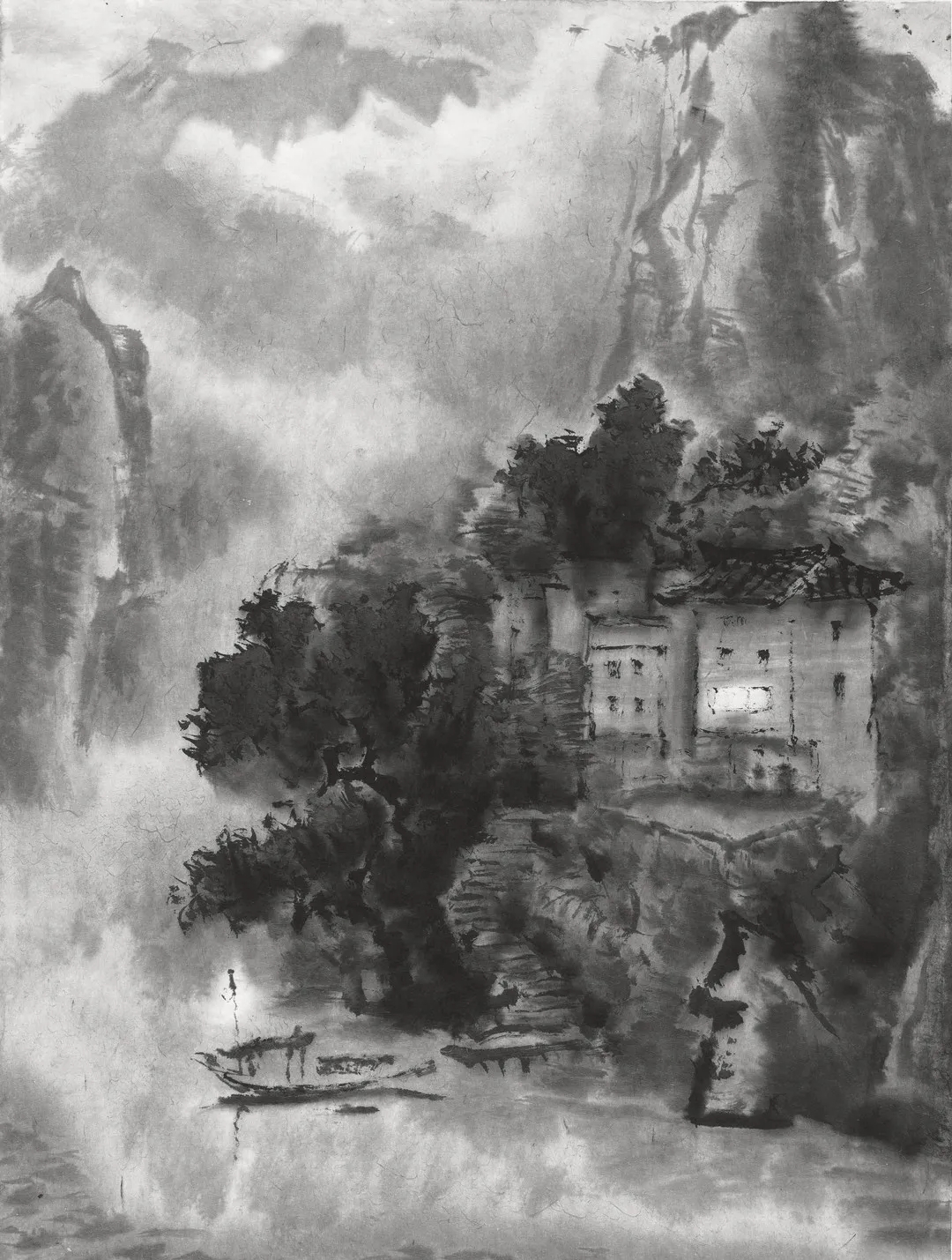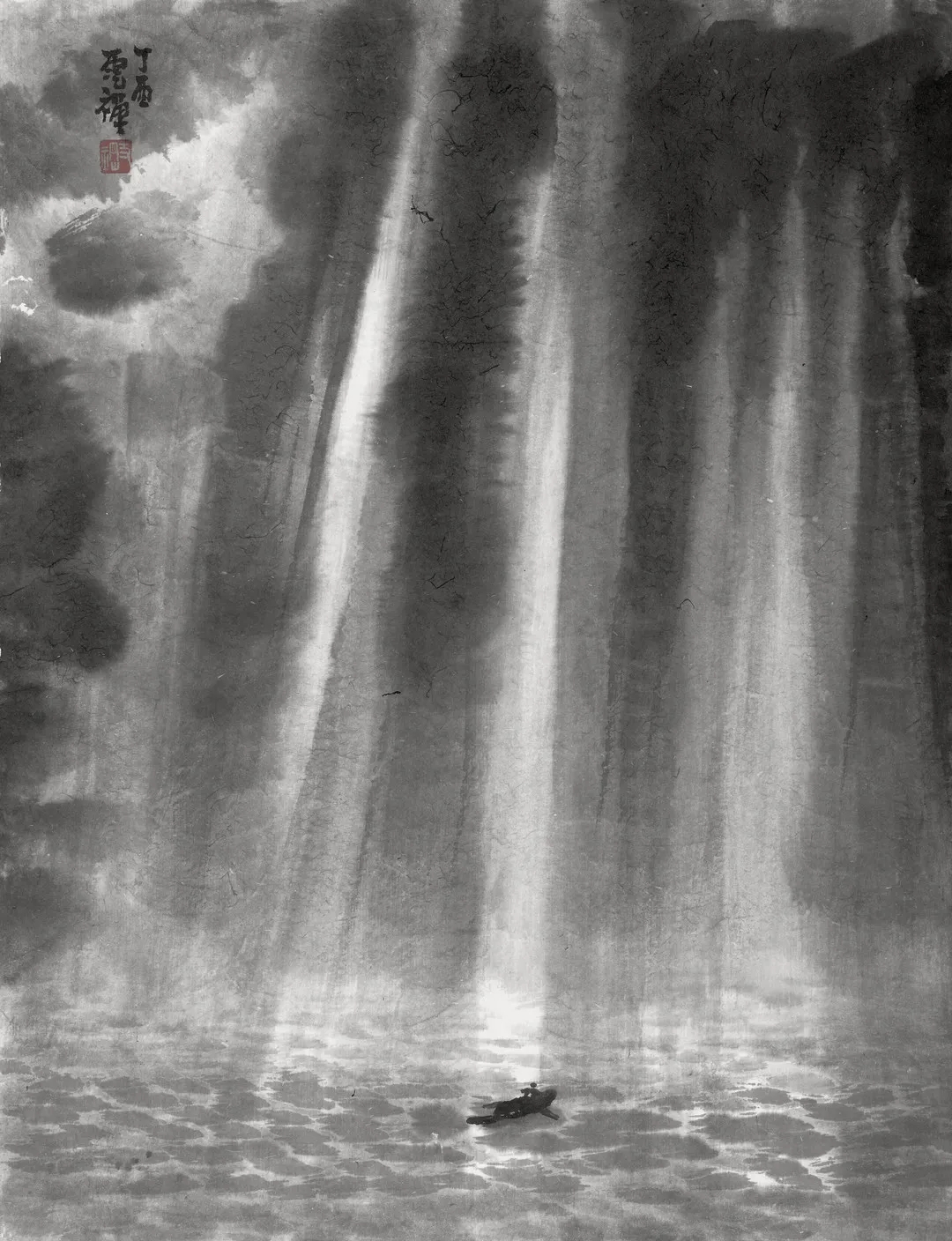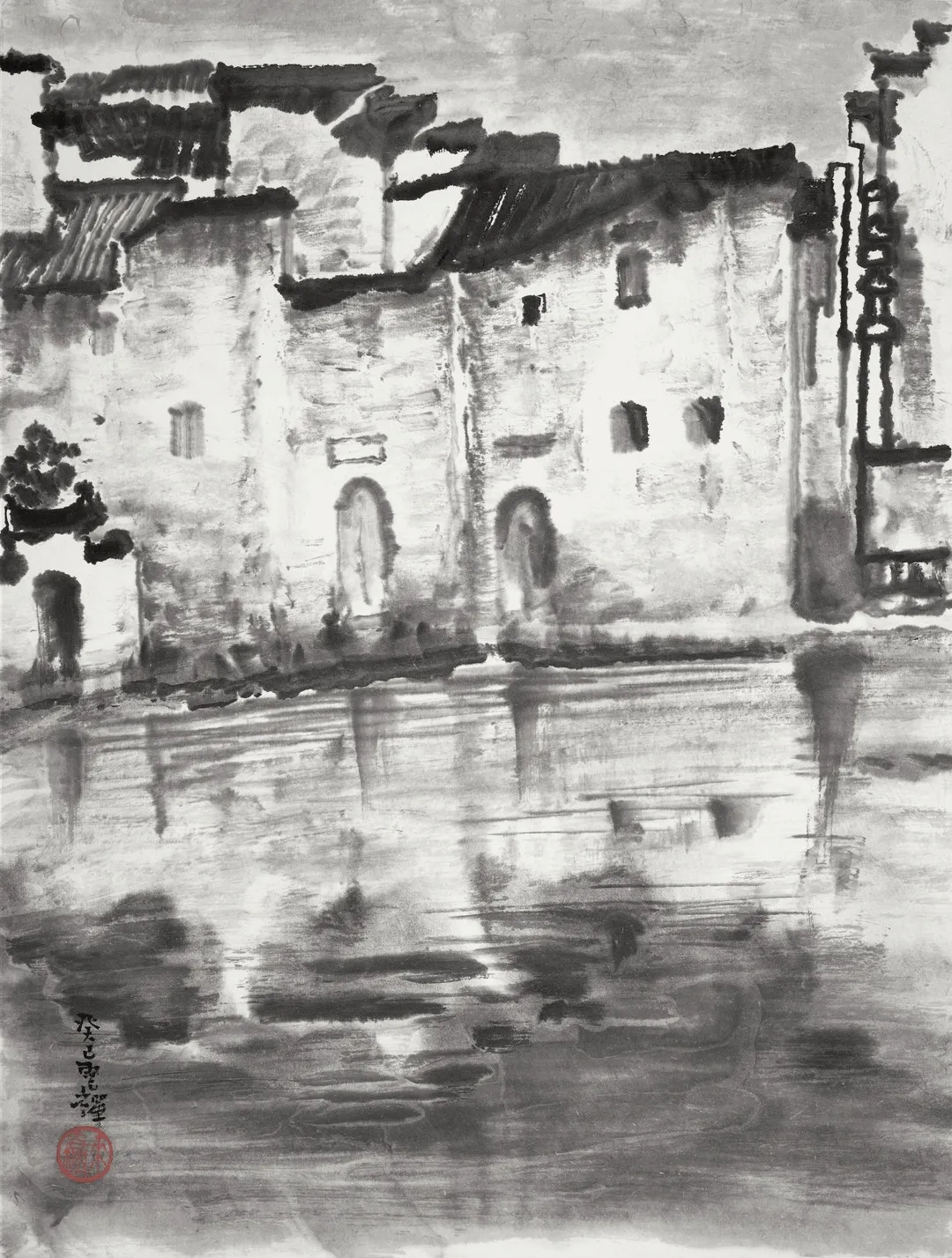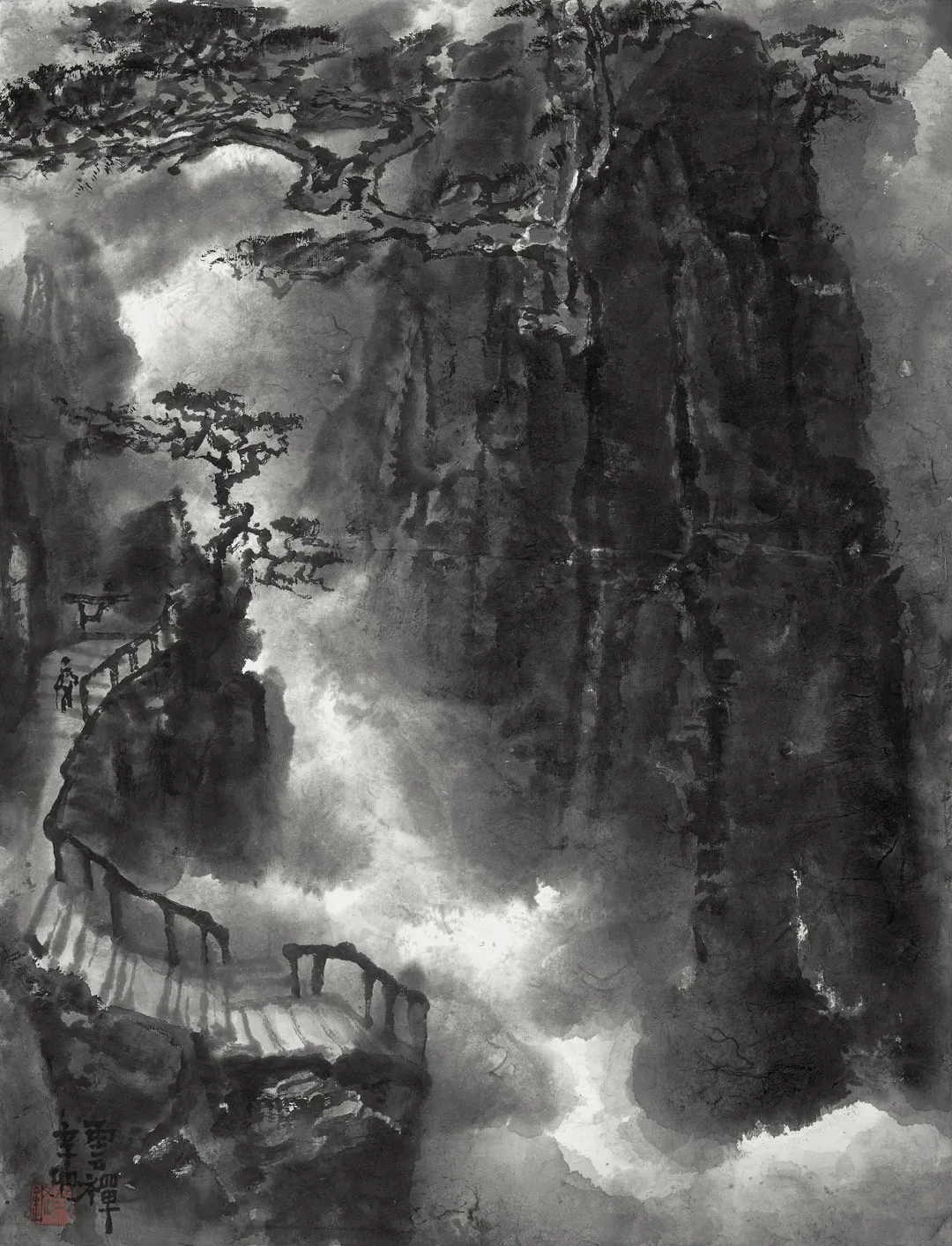- “Pioneer of the Times” Exhibition of Lai Zhigang’s Ink Art
- Home > > Exhibitions >
-
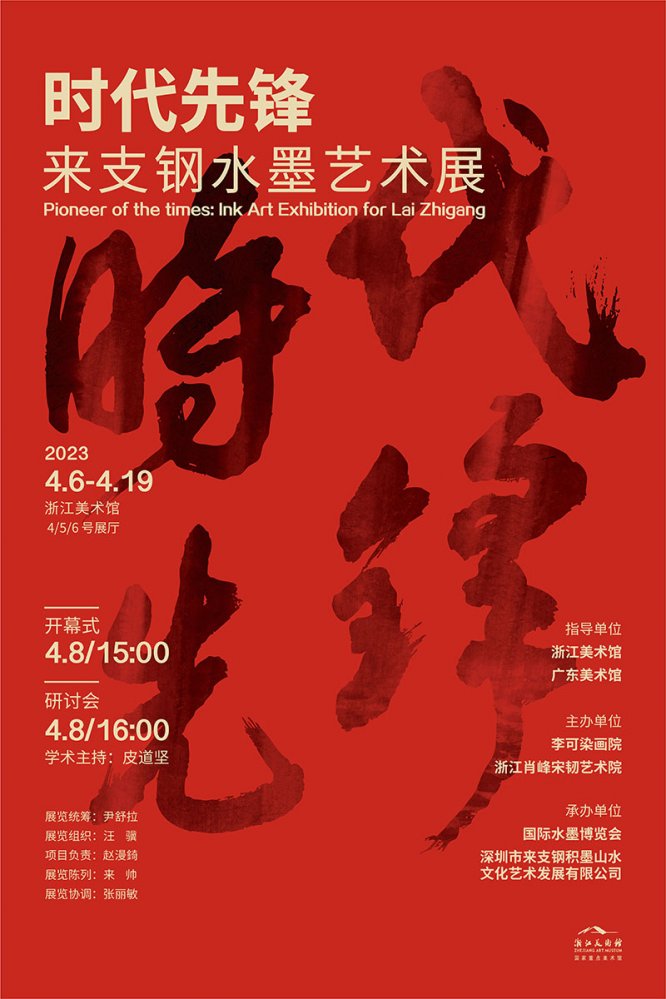
-
“Pioneer of the Times” Exhibition of Lai Zhigang’s Ink Art
Exhibition period: 2023-04-06 - 2023-04-19
Opening ceremony: 1690255008
Venue location: hangzhou
Exhibition organization: Zhejiang Art Museum
Exhibition organization: No. 138, Nanshan Road, Hangzhou, Zhejiang Province
- Exhibition works
- VR exhibition
- Exhibition Introduction
Exquisite Lai-style Landscape in the Lingering Ink Mist
Just after the Spring Festival, there is another spring news.
There are theoretical explanations for the fact that Chinese painting can be passed down for thousands of years and constantly burst out with new inspiration. One is that it is not a single seedling, but is nourished by profound thoughts and thrives from the rich traditional cultural soil. In this sense, Chinese painting can be called the crystallization of philosophical painting, cultural painting and artistic painting. The second is the special effect of its original brush, ink, and rice paper. Their shapes, functions, and even their names have remained unchanged for thousands of years, but such thin paper, short pens and pure ink have the extraordinary potential to reveal the vast world, which is worth pondering. The third is the artist's own attainments. From the depiction of natural scenery to the expression of personal mood, generations of artistic geniuses have been emerging from ancient times to the present, like waves of spring tides, rushing thousands of miles. Lai Zhigang, an artist from Bengbu, Anhui, gallops like a dark horse in the world of brush and ink. At times he charges fearlessly as if in battle, at other times he influences the viewer with his contemplation. With the arbitrary conversion between dynamic and static, this style can be called the pioneer of the times.
Landscape painting is a kind of traditional Chinese ink painting. It realizes the unification of the artistic realm and the philosophical realm pursued by the ancients by depicting the natural scenery, and tries to integrate the scenery into the spiritual world to realize the ideal of harmony between man and nature, a spirit and charm of oriental philosophy. The grandeur and philosophy in Lai Zhigang's paintings have indeed reached a high level and depth, reflecting the inner spirit contained in Chinese painting and the desire and interest expressed outwardly. Through his works, we can see how he devotes himself to creation, communicating with the objects in his eyes and brush. In his paintings, there is the collision and refinement of subconsciousness, thought and concept, which intercepts the progress of thinking (philosophic thinking) and adds the seasoning of humanism (culture) in the process of blending with what is visible (nature). Inside and outside a piece of paper, I see an attitude that is both natural and supernatural, pleasing to the eye and intriguing, with a long aftertaste. From lofty mountains to lingering clouds and mist, it is not only a reflection of the natural world, but also a flexible use of brush and ink techniques, and a creative expression of mood and emotion. This is more like a transformation of painting, a transformation and improvement from quantity to quality, from a metaphysical physical movement to a metaphysical spiritual movement. The creative tendency and aesthetic meaning of "beauty is the perceptual manifestation of ideas" (Hegel) is contained in it. The reason why Lai's paintings are attractive, thought-provoking and evoking aftertaste derived from aesthetic pleasure all benefit from the aesthetic elements contained in them. Lai's paintings are engaging, thought-provoking, and evocative of aesthetic pleasure, all thanks to the aesthetic elements embedded within them.
Lai's work is based on the logic of Chinese painting's rules of ink layout. Within this framework, he tries to pursue the original flavor of the ink image, which is the core of his artistic concept, with his unique accumulated-ink technique. Accumulated-ink is of extraordinary importance to him, as this is the way he has found to perfectly connect his aesthetic ideas with the real artistic needs. However, the display of ink images is not only based on techniques, but also inseparable from artistic thinking and logical planning. The ancients divided ink into five shades, but I believe there are far more than five shades, and even a rainbow of ink. Thick and light, deep and shallow, thick and thin, strong and weak, light and dark inks are even endowed with different tensions from the perspective of mechanics, not to mention the myriad changes in the manifestation of inner spirit and outward momentum. Lai changes the ink shades to highlight the texture, volume or sense of space of the object, enriching the picture from both visual and artistic perspectives. Thin white clouds like feathers or thick and dignified black mist, majestic mountains or deep and vast emptiness, his works fully demonstrate his skillful use of accumulated-ink techniques. He must have a deeper understanding of traditional Chinese philosophy, because he embodies the vigor and beauty extracted from the laws of nature in various intentions and gestures, which is visually impactful and profound. This seemingly random but deeply rooted painting technique contains the rich elements of traditional essence, cultural essence, Chinese spirit and national soul that Chinese painters believe in and are willing to express. No matter at first glance or careful observation, his works are undisputed, and properly reflect the essence and connotation of the corresponding painting themes and techniques. This is the way Chinese painting should be. And what I have seen is far more than that, but also how a Chinese painting painter successfully sticks to the purpose and attitude of Chinese painting and maintains its right way. In pursuing the innovation and development of painting, Lai uses the concrete color, shape and meaning of ink to show the scenery, inspiration and epiphany originating from nature. Therefore, his creative process and his works are always integrated with his own state of mind, showing his creative intentions from the outside and inside, and striving for the mutual understanding and harmony of existence and consciousness. In his clear sky, elegant clouds, rolling mountains, ethereal environment and magnificent imagination, there is the spirit of Chinese painting, the advantages of ink painting, and the harmonious aesthetics of the unity of appearance and interior, all of which belong to his Lai-style landscape. Such a transformation and breakthrough from the routine and stylized painting tradition is undoubtedly in line with the essence and law of the eternal innovation and development of art. The emergence of this new painting style that fully demonstrates the tension of ink and wash is ultimately derived from the development of the times and the progress of civilization, which has brand-new significance and is worthy of joy.
The basic viewpoint of Rudolf Arnheim in Art and Visual Perception is that "all perception contains thinking, all reasoning contains consciousness, and all observation contains creation." Similarly, Lai’s works remind me of his own devotion and admiration for art, as he said, “Art is the most deceitful, and art is the least deceptive.” Apparently, he recognized that creating beauty was hard, and he had no choice but to work hard. He can only forge ahead, trying to use his works to express his artistic ideas and defend them. Therefore, everything we see today is his accumulation of decades of exploration and hard work on the road of accumulated-ink art. So, what are the ideological, artistic and academic qualities of his works? What are the aesthetic elements? What is his aesthetic in them? In more detail, the composition layout, color level, shape adaptation, visual effect and appreciation value of these works can all be appreciated and compared. Therefore, in the 21st century, in China, a country with a large number of talents, when new talents and new things emerge and attract widespread attention, fair and objective demonstrations and academic evaluations are particularly important.
Pei Jian told me that Zhejiang Xiao Feng-Song Ren Academy of Art is one of the organizers of the exhibition, and we will organize a professional academic seminar, inviting some experts and scholars to conduct academic studies and discussion on Lai Zhigang's painting art. I think it's a good idea and necessary. I earnestly hope that all experts, scholars, and friends in the art community will open their views, tell the truth, discuss the essence of art, and truly evaluate the artistry from the perspective of the status quo and development, and in connection with aesthetic culture such as art laws and aesthetic principles. We should not only comment on the painting, but also discuss the author, because the author and the work are a unity with an internal connection. It is not always true that a painting resembles its author, but it does make sense in general contexts, because behind the art phenomenon is the human factor, which can be subdivided into human and environment, humanities and science, society and new knowledge, thought and analysis, time and history, etc. Although Lai-style landscape appears in the form of personal creativity, it is produced in human production activities and social practice after all, so it cannot be completely isolated. Human production activities have an internal scale, which is of course not the form of beauty inherent in objective natural objects, but the scale of human perceptual activities in the context of art, which is what Marx called the "law of beauty". In the 80 years of art path so far, I have been the dean of a university for more than ten years, and I have a deep understanding of the hardships of cultivating talents. Therefore, I am very pleased to see such an excellent painter as Lai, who is a harbinger of the progress of Chinese painting towards a higher peak. The innovation in creation and the continuous development of art are still inseparable from high-quality education, careful cultivation, and joint support, especially a social environment that is suitable and conducive to the talent training mechanism. Talent cultivation is not the career of one individual, but the highest priority that the whole society should care about and contribute to.
Time flies, and Chinese painting has become a unique Chinese culture in the modern context, and even a current hot subject. From the volume of painters and works, to the thriving development of Chinese painting, the current situation is worthy of joy. But we still have to keep calm. It's time for us to think rationally, especially from the perspective of the status of a big country, big cultural vision, and big art, whether there are still big questions worthy of our deep thinking in the art community? There is a famous Qian Xuesen’s question in the scientific community, which always lingers in my mind. At such an advanced age, I am still concerned about this, and I can't help but ask myself repeatedly, “Where are the masters of Chinese art? Where are the great works of China?” We have to admit that peerless masters like Wu Changshuo, Lin Fengmian, Xu Beihong, Qi Baishi, Pan Tianshou, Huang Binhong, Zhang Daqian, Dong Xiwen, Liu Haisu have been away from us for too long.
I would like to quote the words of my respected academic predecessor Mr. Feng Zikai, which expounds the relationship between painters and paintings, the relationship between subjectivity and objectivity, and artistic philosophy on the significance of aesthetic education. "When art tends to be objective, artists have little connection with their works. When art focuses on subjective expression, works have a close relationship with artists, and even become a reflection of their lives. For paintings, I like the latter with verve, rather than the former that is mechanically produced; for artists, I also admire the latter who live by art, but not the former who is more like a craftsman." Mr. Feng Zikai's words are concise but thought-provoking, so I choose this sentence to end this article. Please excuse the long-windedness of an old man, and hope my preface is useful.
(Narrated by Xiao Feng and compiled by Guo Peijian)
Xiao Feng
Former President of China Academy of Art, Consultant of China Artists Association
Dean of Zhejiang Xiao Feng-Song Ren Academy of Art, Consultant of Xi'an Municipal People's Government
Early Spring of 2023
Guests At the Opening Ceremony:
Qin Zhigang, Former Vice Chairman of China Federation of Literary and Art Circles
Chen Jiayuan, Former Vice Chairman of Zhejiang Provincial Political Consultative Conference
Sheng Changli, Former Vice Chairman of the Zhejiang Provincial Political Consultative Conference
Sun Wenyou, Former Vice Chairman of the Zhejiang Provincial Political Consultative Conference
Zhao Guangyu, Former Vice Chairman of Hangzhou CPPCC
Yang Jianxin, Former Director of Zhejiang Provincial Department of Culture
Tian Yuyuan, Former Party Secretary of Zhejiang Federation of Literary and Art Circles
Jiang Jiandong, Former First-Level Inspector of Zhejiang Federation of Literary and Art Circles
Wu Jiaxi, Deputy Secretary, Deputy Director and First-Level Inspector of Zhejiang Provincial Bureau of Statistics
Ye Min, President of Hangzhou Convention and Exhibition Industry Association and Former Deputy Secretary-General of Hangzhou Municipal Government
Gao Fagen, Former Vice President of China Academy of Art
Ying Jinfei, Director of Zhejiang Art Museum and Vice Chairman of Zhejiang Artists Association
Guo Peijian, Executive Director of Zhejiang Xiaofeng Songren Academy of Art
Pi Daojian, Deputy Director of the Curatorial Committee of the China Artists Association and A Famous Critic
Huang Jun, Dean of the School of Art Management and Education, China Academy of Art
Ren Daobin, Former Dean of the School of International Education, China Academy of Art
Zhou Gang, Professor and Doctoral Supervisor of China Academy of Art
Shan Zeng, Professor of China Academy of Art, Deputy Dean of School of Art Education and Management
Yin Shula, Coordinator of This Exhibition and Former Director of the Collection Department of Zhejiang Art Museum
Si Wenge, Director of the Fine Arts Center of China Academy of Art
Huang Heqing, Professor of the School of Art and Archaeology, Zhejiang University
Li Xiaofeng, Curator and Associate Professor of the Academy of Fine Arts, Shanghai University
Han Licheng, Former Director of Ningbo Art Museum
Tao Wenjie, Vice Chairman and Secretary General of Zhejiang International Art Exchange Association
Yang Dawei, Professor of School of Design Art, Zhejiang Institute of Communication
Wei Xiangqi, Associate Research Librarian of the National Art Museum of China
Ling Haiheng, A Professor at the School of Foreign Languages and Cultures, South China Normal University
Jiang Jun, Art Critic
Wang Shaoqiu, Director of Wang Shaoqiu Art Museum
Xiong Delong, Founder of International Daily and Chairman of Xiong's Group
Wen Changqing, Chairman of Shenzhen Lai Zhigang Art Center
Zhou Weiguo, Chairman of China Aisa Group
Xie Zuosheng, Vice President and Secretary General of Zhejiang Cultural Industry Association
Wang Ji, Chief Curator and Secretary-General of West Lake Art Fair
Wang Xuedong, Chairman of Shenzhen Guoyin Leasing Co., Ltd.
Dai Jie, Editor-In-Chief of Hong Kong Commercial Daily
Lai Zhigang, Artist
Guest At the Seminar:
Academic Chair: Pi Daojian Deputy Director of the Curatorial Committee of the China Artists Association, A Famous Critic
Gao Fagen Former Vice President of China Academy of Art
Ren Daobin Former Dean of the School of International Education, China Academy of Art
Zhou Gang Professor and Doctoral Supervisor of China Academy of Art
Yin Shula Coordinator of This Exhibition, Former Director of the Collection Department of Zhejiang Art Museum
Shan Zeng Professor of China Academy of Art, Vice President of School of Art Education and Management
Si Wenge Director of the Fine Arts Center of China Academy of Art
Huang Heqing Professor of School of Art and Archaeology, Zhejiang University
Li Xiaofeng Curator and Associate Professor of Shanghai University Academy of Fine Arts
Wang Shaoqiu Director of Wang Shaoqiu Art Museum
Tao Wenjie Vice Chairman and Secretary General of Zhejiang International Art Exchange Association
Yang Dawei Professor of School of Design and Art, Zhejiang Institute of Communication
Cai Shunong Chief Reporter of Art News
Wei Xiangqi Associate Research Librarian, National Art Museum of China
Jiang Jun Art Critic
Artist: Lai Zhigong
Academic Chair: Pi Daojian
Sponsor: Li Keran Academy of Painting
Zhejiang Xiao Feng-Song Ren Academy of Art
Organizer: International Ink Wash Expo
Shenzhen Lai Zhigang Jimo Landscape Painting Culture and Art Development Co., Ltd.
Exhibition Remarks
Exhibition Hall: Hall 4/5/6, Zhejiang Art Museum
Seminar: April 8, 16:00 pm
Instructors: Zhejiang Art Museum, Guangdong Art Museum
Exhibition Coordinator: Yin Shula
Exhibition Organization: Wang Ji
Project Leader: Zhao Manqi
Exhibition Display: Lai Shuai
Exhibition Coordinator: Zhang Limin
